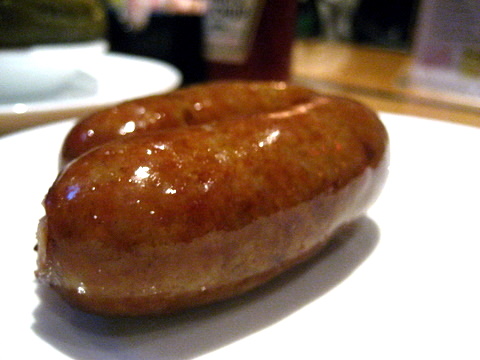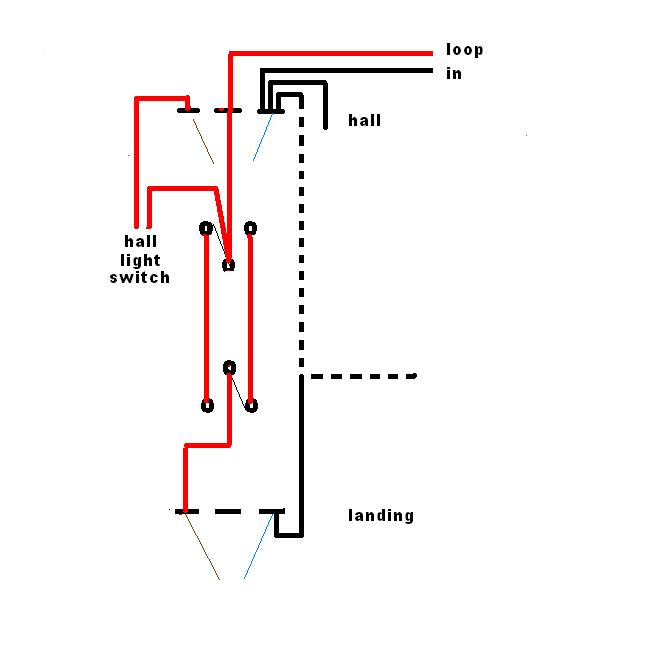Recently had a bathroom installed in my parents house by a a well known company that begins with a W. All went well except for the install of the downlights in the bathroom.
Board is an MEM 2000 Split Load 16th Ed. and when they moved the upstairs LTG to the RCD would pop constantly, moved both LTG circuits to the RCD and no popping, leading them to suspect a borrowed neutral. No further investigation was carried out.
I have done some investigation and am unsure if they are correct as a borrowed neutral is not something I have come across before. (I'm only partly qualified/in training).
Each MCB in the C/U has two cables and the previous sparks have identified 4 neutrals to go with it. It seems one T+E from the downstairs MCB simply supplies the under stairs cupboard so this is easy enough to identify and exclude from the problem.
This leaves me with 2 x T+E (1 per LTG circuit) and then two singles+earth. One is a N+E and one is a L+E.
Hallway Rose

Contains 2 L+E, 2 N+E and 1 T+E
Hallway Switch

You tell me! However all T+E with twin cores other than the single marked with sharpie. Hallway switch is the rightmost of 3 and landing is the centre.
Landing Switch

One T+E and one single
Landing Rose

Both singles
LTG Feeds

Original sparks grouped both T+E and one single but not the other single, Neutral+E is separate, L+E is taped with the other two.
Reason for the query is board will soon be changed for a Eeaton all RCBO board and will need to resolve this before the LTGs go on two RCHBO's.
I'm thinking the first port of call is to trace that single N, thinking temp link to earth in the C/U and then Megger N-E in roses until I find it, as both roses have singles.
If it does turn out to be a borrowed neutral, what is the best way to resolve this, I do not want to go down the both circuits on one RCBO route, as this is one of the reasons for going to RCBO's, I do not want the parents plunged into darkness in the event of an RCD fault.
If you need any more information I will try my best to answer your questions, and yes, I have a 2330/2391 NICEIC friend doing the C/U change
Board is an MEM 2000 Split Load 16th Ed. and when they moved the upstairs LTG to the RCD would pop constantly, moved both LTG circuits to the RCD and no popping, leading them to suspect a borrowed neutral. No further investigation was carried out.
I have done some investigation and am unsure if they are correct as a borrowed neutral is not something I have come across before. (I'm only partly qualified/in training).
Each MCB in the C/U has two cables and the previous sparks have identified 4 neutrals to go with it. It seems one T+E from the downstairs MCB simply supplies the under stairs cupboard so this is easy enough to identify and exclude from the problem.
This leaves me with 2 x T+E (1 per LTG circuit) and then two singles+earth. One is a N+E and one is a L+E.
Hallway Rose

Contains 2 L+E, 2 N+E and 1 T+E
Hallway Switch

You tell me! However all T+E with twin cores other than the single marked with sharpie. Hallway switch is the rightmost of 3 and landing is the centre.
Landing Switch

One T+E and one single
Landing Rose

Both singles
LTG Feeds

Original sparks grouped both T+E and one single but not the other single, Neutral+E is separate, L+E is taped with the other two.
Reason for the query is board will soon be changed for a Eeaton all RCBO board and will need to resolve this before the LTGs go on two RCHBO's.
I'm thinking the first port of call is to trace that single N, thinking temp link to earth in the C/U and then Megger N-E in roses until I find it, as both roses have singles.
If it does turn out to be a borrowed neutral, what is the best way to resolve this, I do not want to go down the both circuits on one RCBO route, as this is one of the reasons for going to RCBO's, I do not want the parents plunged into darkness in the event of an RCD fault.
If you need any more information I will try my best to answer your questions, and yes, I have a 2330/2391 NICEIC friend doing the C/U change








